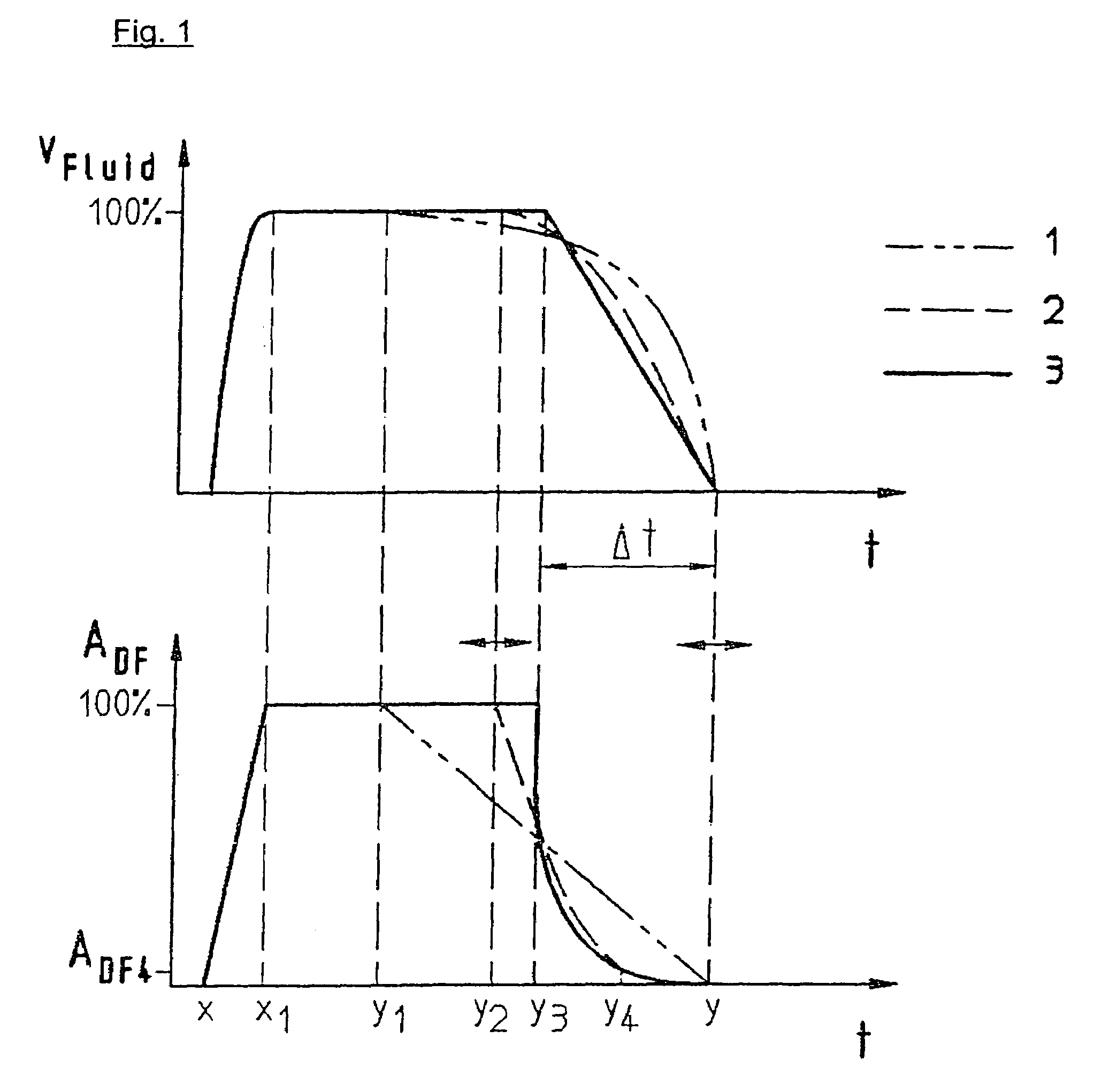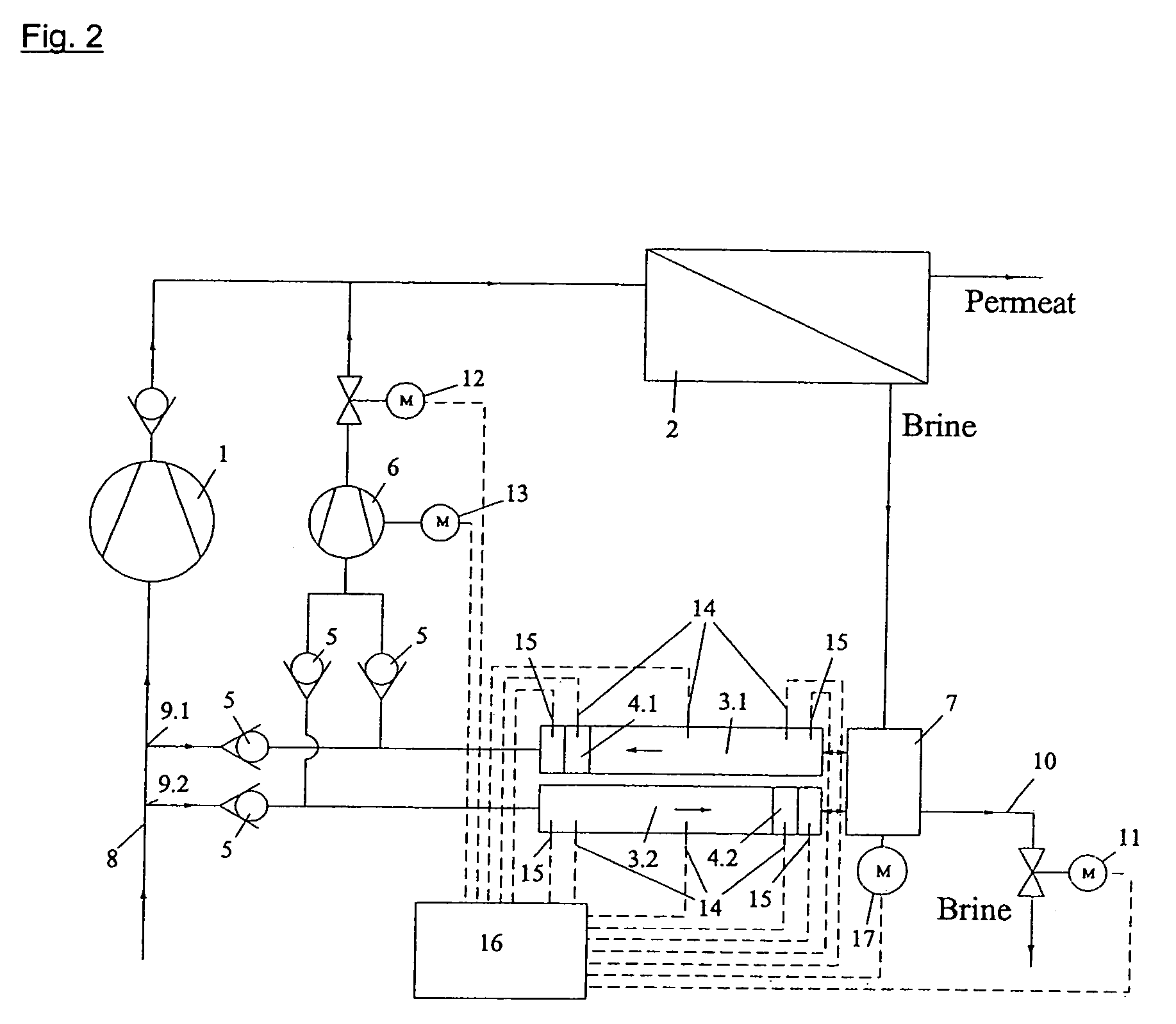Pressure exchanger system
a technology of pressure exchanger and pressure exchanger, which is applied in the direction of positive displacement liquid engine, piston pump, pump parameter, etc., can solve the problems of adverse effect on the efficiency of reverse osmosis system, addition of losses, and substantial material stress on all components, and achieve reliable operation over a long period of time.
- Summary
- Abstract
- Description
- Claims
- Application Information
AI Technical Summary
Benefits of technology
Problems solved by technology
Method used
Image
Examples
Embodiment Construction
[0021]For simplicity and illustrative purposes, the principles of the present invention are described hereinafter with reference to various illustrative embodiments thereof. Although the preferred embodiments of the invention are particularly disclosed herein, one of ordinary skill in the art will readily recognize that the same principles are equally applicable to, and can be implemented in other systems, and that any such variation would be within such modifications that do not depart from the true spirit and scope of the present invention. Before explaining the disclosed embodiments of the present invention in detail, it is to be understood that the invention is not limited in its application to the details of any particular arrangement shown, since the invention is capable of other embodiments. The terminology used herein is for the purpose of description and not of limitation.
[0022]A variable and / or discontinuous movement sequence of a driven reversing element is illustrated in...
PUM
| Property | Measurement | Unit |
|---|---|---|
| rate of movement | aaaaa | aaaaa |
| pressure | aaaaa | aaaaa |
| residence time | aaaaa | aaaaa |
Abstract
Description
Claims
Application Information
 Login to View More
Login to View More - R&D
- Intellectual Property
- Life Sciences
- Materials
- Tech Scout
- Unparalleled Data Quality
- Higher Quality Content
- 60% Fewer Hallucinations
Browse by: Latest US Patents, China's latest patents, Technical Efficacy Thesaurus, Application Domain, Technology Topic, Popular Technical Reports.
© 2025 PatSnap. All rights reserved.Legal|Privacy policy|Modern Slavery Act Transparency Statement|Sitemap|About US| Contact US: help@patsnap.com



